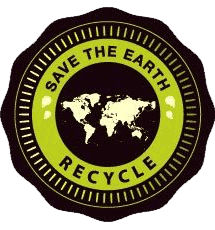If you are feeling bored of your plain lawn, it might be time to do a bit of landscaping and upgrade your garden space. There are many different things you can do to make a regular lawn a bit more interesting, and these can be applied to home and commercial properties alike.
Landscaping features can be divided into two main subcategories: hardscaping and softscaping. But what do those mean? Below, we will explain both categories and how they work, as well as give you some tips and ideas you can use as inspiration for your landscaping projects.
We maintain fast drop-offs and pick-ups, effective waste management services and solutions, and unbeatable rates on rental dumpsters in Sparks Glencoe, Maryland and the 21152 ZIP code.
What is Hardscaping?
Hardscaping refers to projects done using hardscape materials. But what are hardscape materials?
Hardscape refers to landscaping materials that are not living. That means rocks, stones, deadwood, concrete, and similar solid, non-living materials. The hardscaping category also usually includes water features because the construction of water features uses non-living materials to hold the water in place.
Most construction projects in the garden are counted as hardscaping, including walkways, walls, fences, decks, gazebos, built-in furniture, arbors, patios, and pergolas. If it is not alive, it is probably a hardscape feature!
What Is Softscaping?
As you might have guessed, softscaping is the opposite of hardscaping. While hardscaping refers to non-living materials for landscaping, softscaping refers to projects using living materials such as plants. That means that softscape features include lawns, turf, vines, trees, shrubs, flowers, mulch, ivy, and any other sorts of living plants.
Combining Hardscape and Softscape Features
While some people like to base their gardening projects on purely hardscape features or purely softscape features, most gardeners like to combine the two, incorporating elements of both into their landscaping projects.
Combining elements of hardscape and softscape into a single project gives variety and contrast, helping the plants in your softscape features to really stand out. In short, combining the two features makes your garden design really pop.
Hardscape features can make an amazing core for your garden design projects but can be quite bland and harsh on their own. If you have got a large space, then big hardscape features can fill in gaps, bulk things out, and provide definition between areas of plants. They add depth and structure, but they need plants to liven them up and make things more exciting. Without softscape elements, hardscape gardens can seem very sterile and cold.
Similarly, if your garden is entirely filled with plants, those areas of plants can blur into one another and look chaotic. You need hardscape elements to organize your garden space and bring definition to the chaos of living plants. While hardscape alone can look too sterile, softscape alone can look poorly maintained and messy.
Hardscape and Softscape: Top Ideas
There are limitless ways you can combine elements of hardscaping and softscaping. With a little imagination, you can do pretty much anything. That freedom can be intimidating, however, so we have put together a few ideas to get you started. All of these are just suggestions, and you can adapt them and build on them however you like in order to achieve the garden design of your dreams.
If you have got a hardscape path down your garden, why not try planting along the sides of the pathway? A line of flowers or small shrubs along the side of a path can help it to blend into the garden better, feeling more like an integrated part of the design rather than a harsh cut across the lawn.
Similarly, if you have got a long driveway leading into your property, planting trees alongside it transforms it into a large-scale landscaping project rather than just a branch of road.
A gazebo is a popular piece of large garden furniture, but it can dominate a garden and distract from the plants around it. Trailing vines and ivy can help to blend it into its surroundings, breaking up the harsh lines of the gazebo with greenery and life.
If your backyard is looking a bit cluttered with plants, try adding some hardscaping to make it look more organized. A fountain or other water feature can help a wild garden to look well planned and organized and can be designed to look relatively natural while still bringing that hardscape contrast to your space.
Alternatively, you could add retaining walls to your flowerbeds. Raising beds up adds verticality to your garden, and the hardscape element of the retaining wall draws a clean line around each flowerbed. That stops things from looking cluttered without requiring you to remove any plants at all from your garden or other space.
These are just ideas, though. There is no wrong way to combine hardscape and softscape landscaping features, and the only limit is your imagination. If you want to try something, not on this list, go ahead! The ideas outlined above are a great starting point to fire up your imagination rather than a prescriptive list of options.
Conclusion
Understanding the difference between hardscape and softscape is a vital step towards upgrading your garden to look its best. Knowing what you are doing enables you to understand why things look good next to each other in certain configurations, which in turn helps you to design and build things that look great every single time. The important thing about landscaping is that you can experiment, though. Try combining hardscape and softscape features in new, unexpected ways to get an exciting and fresh look for your garden!
